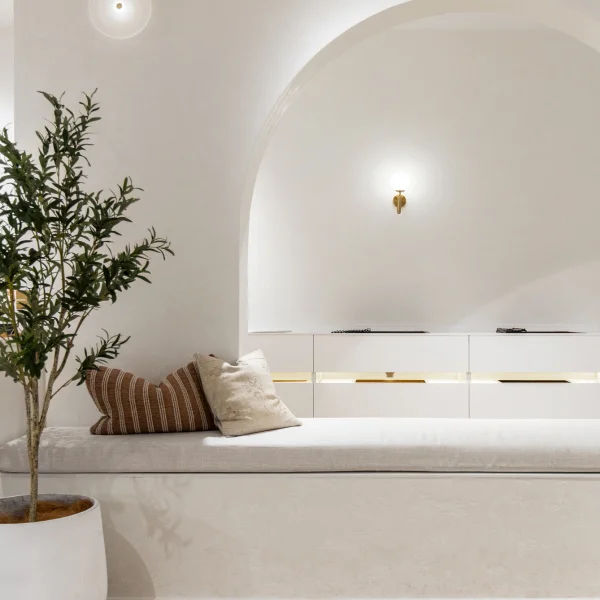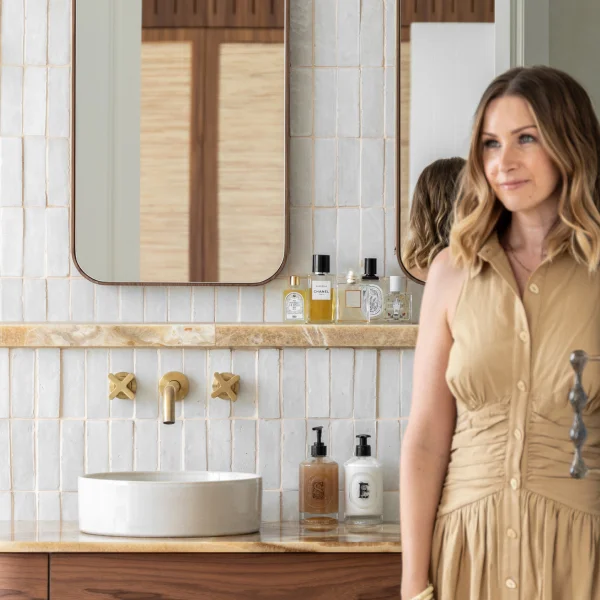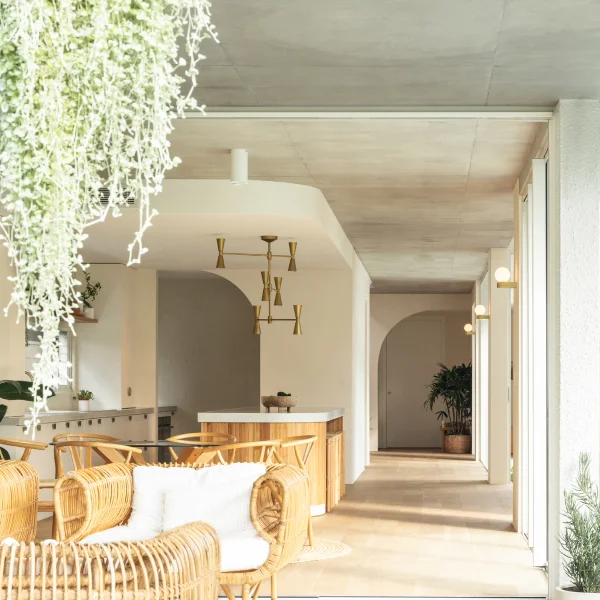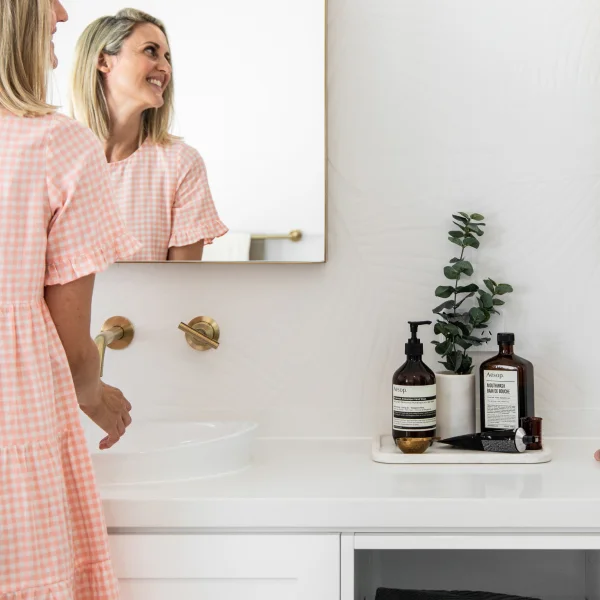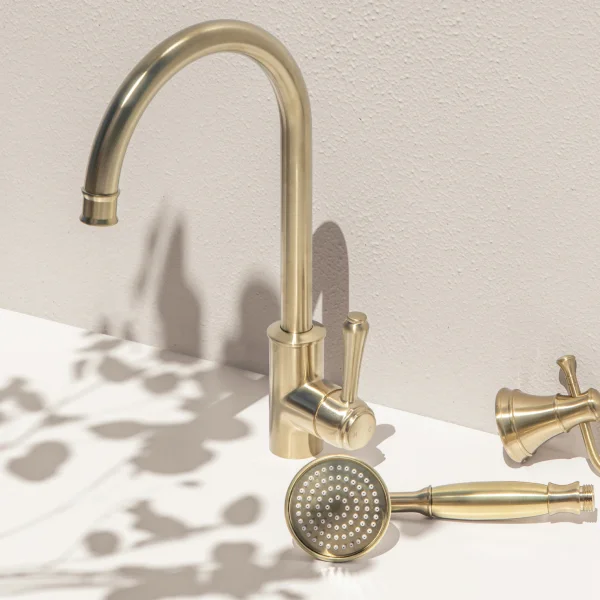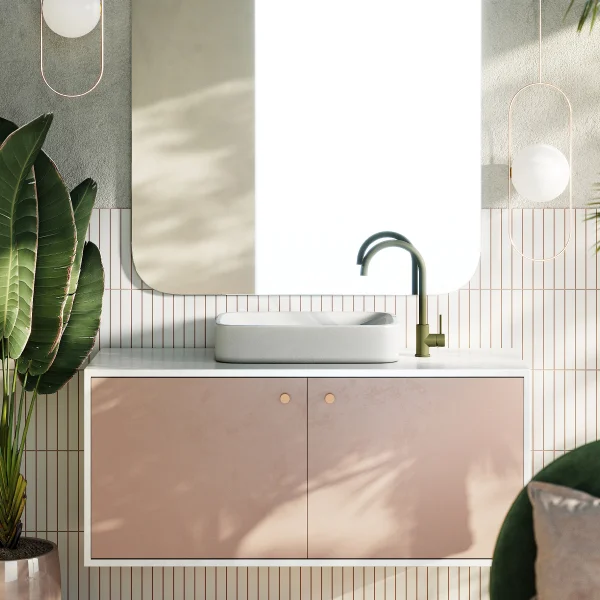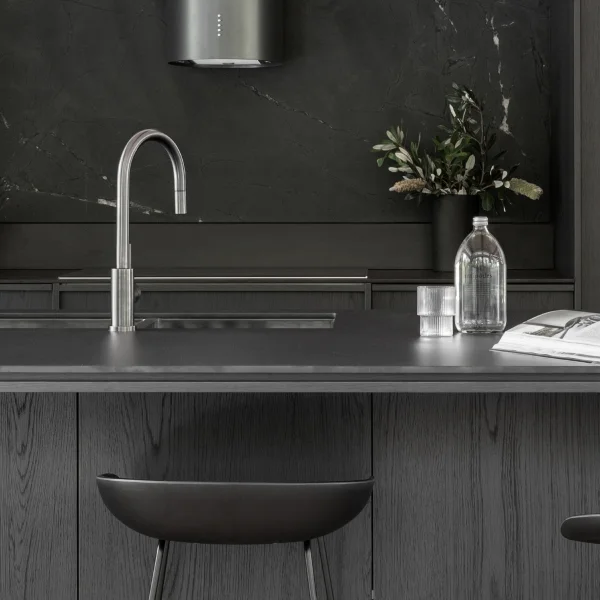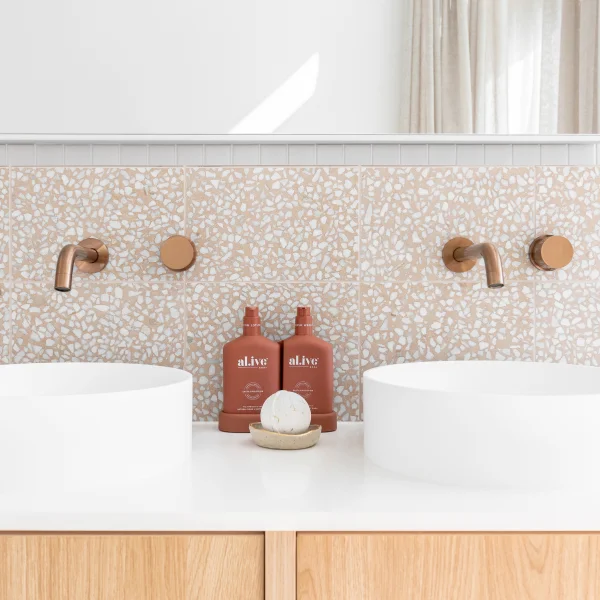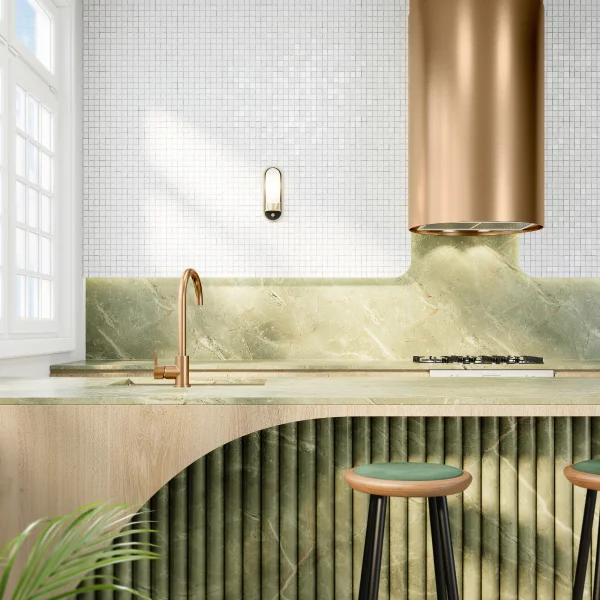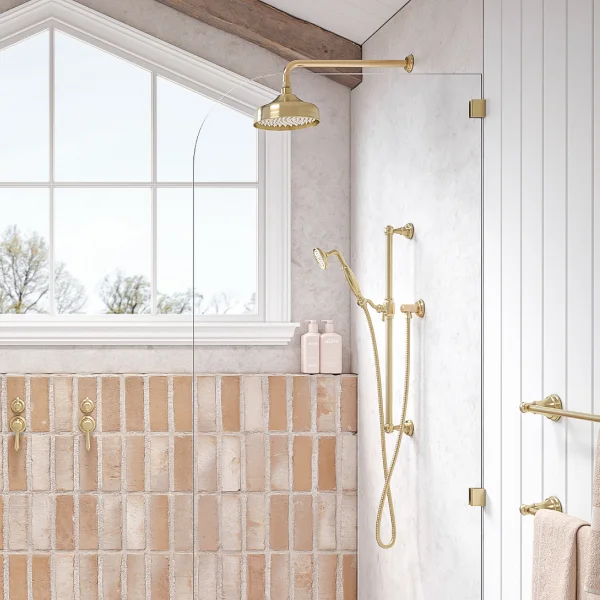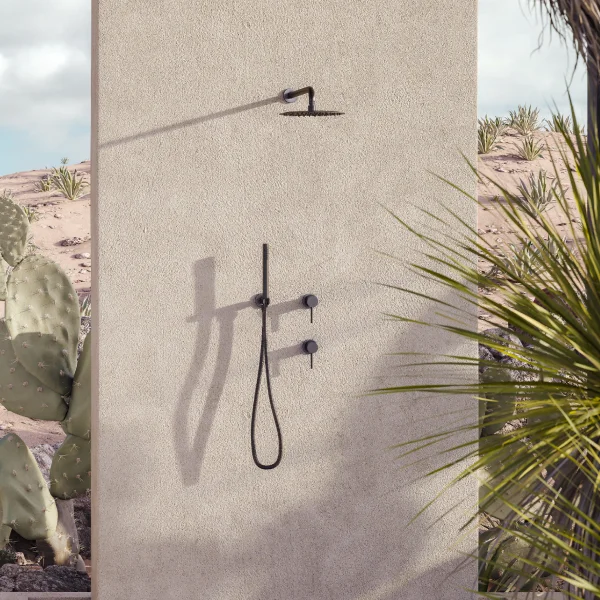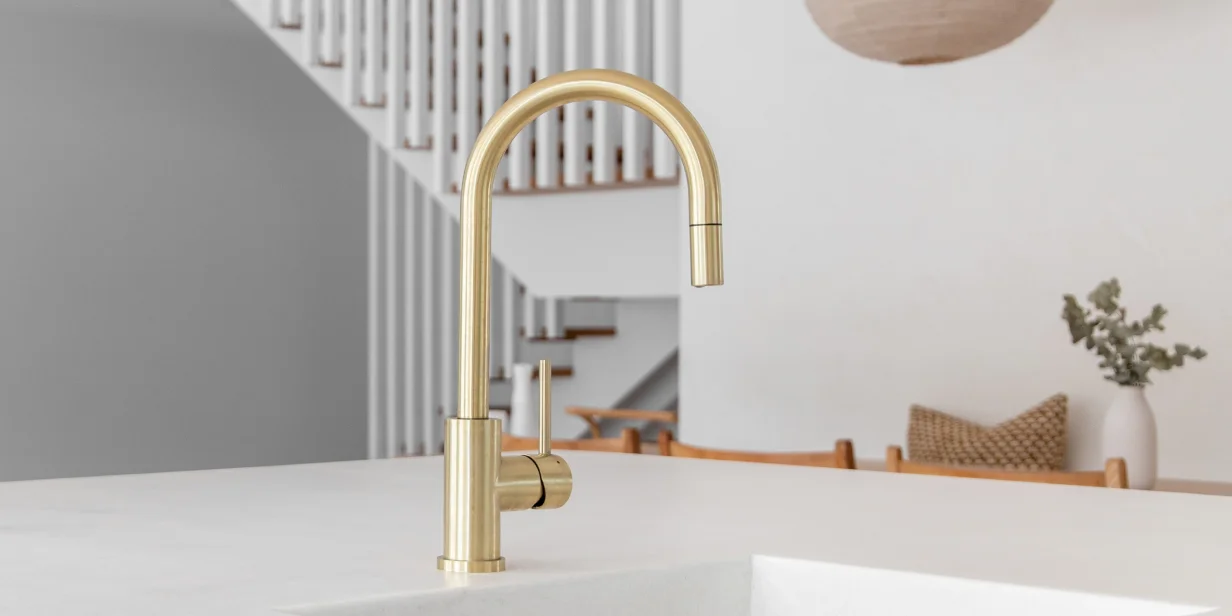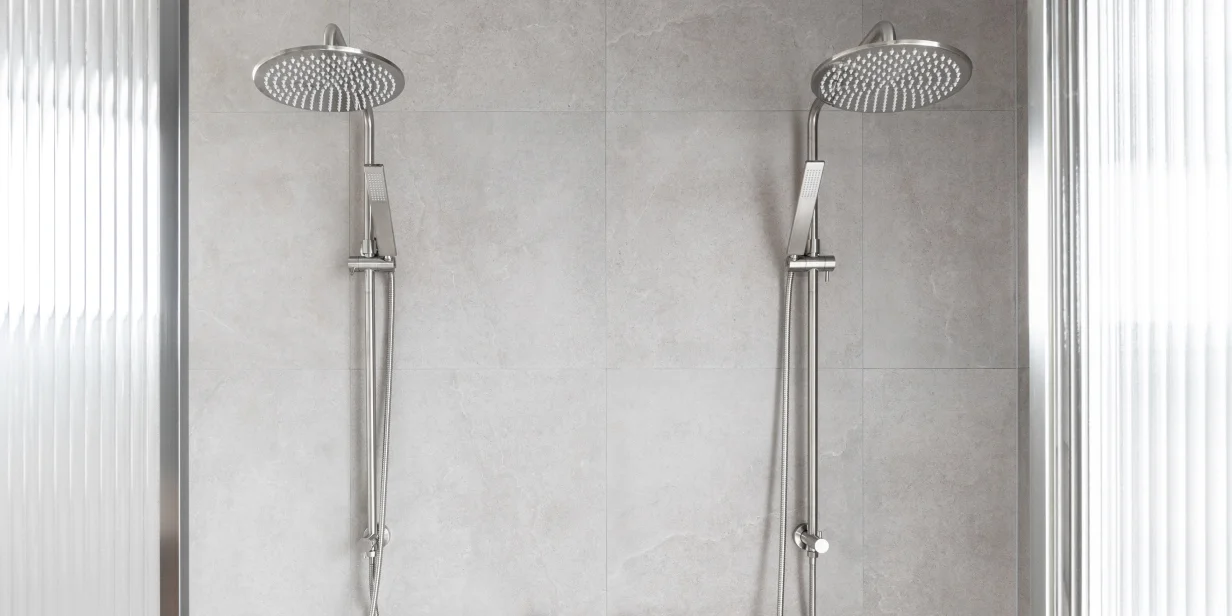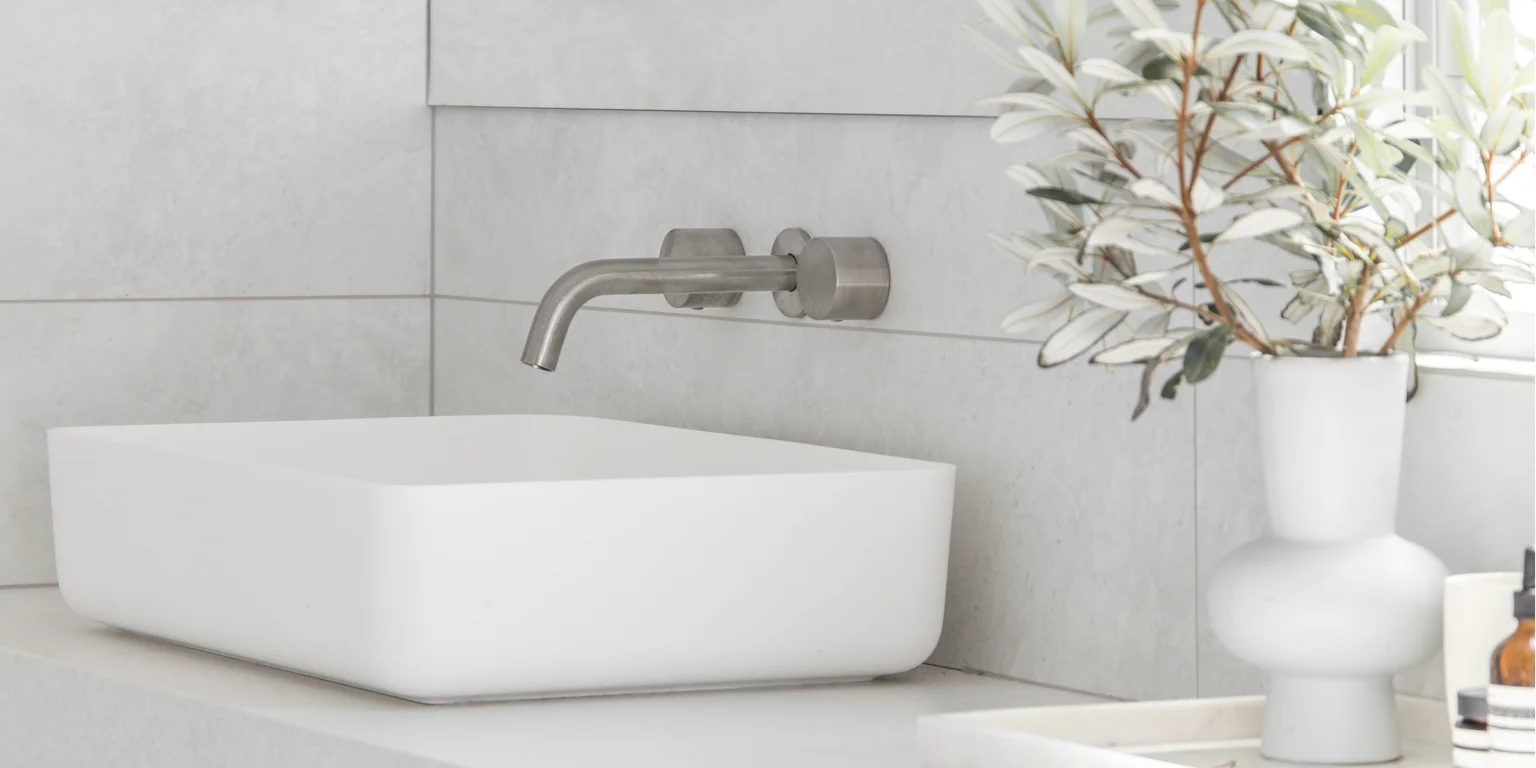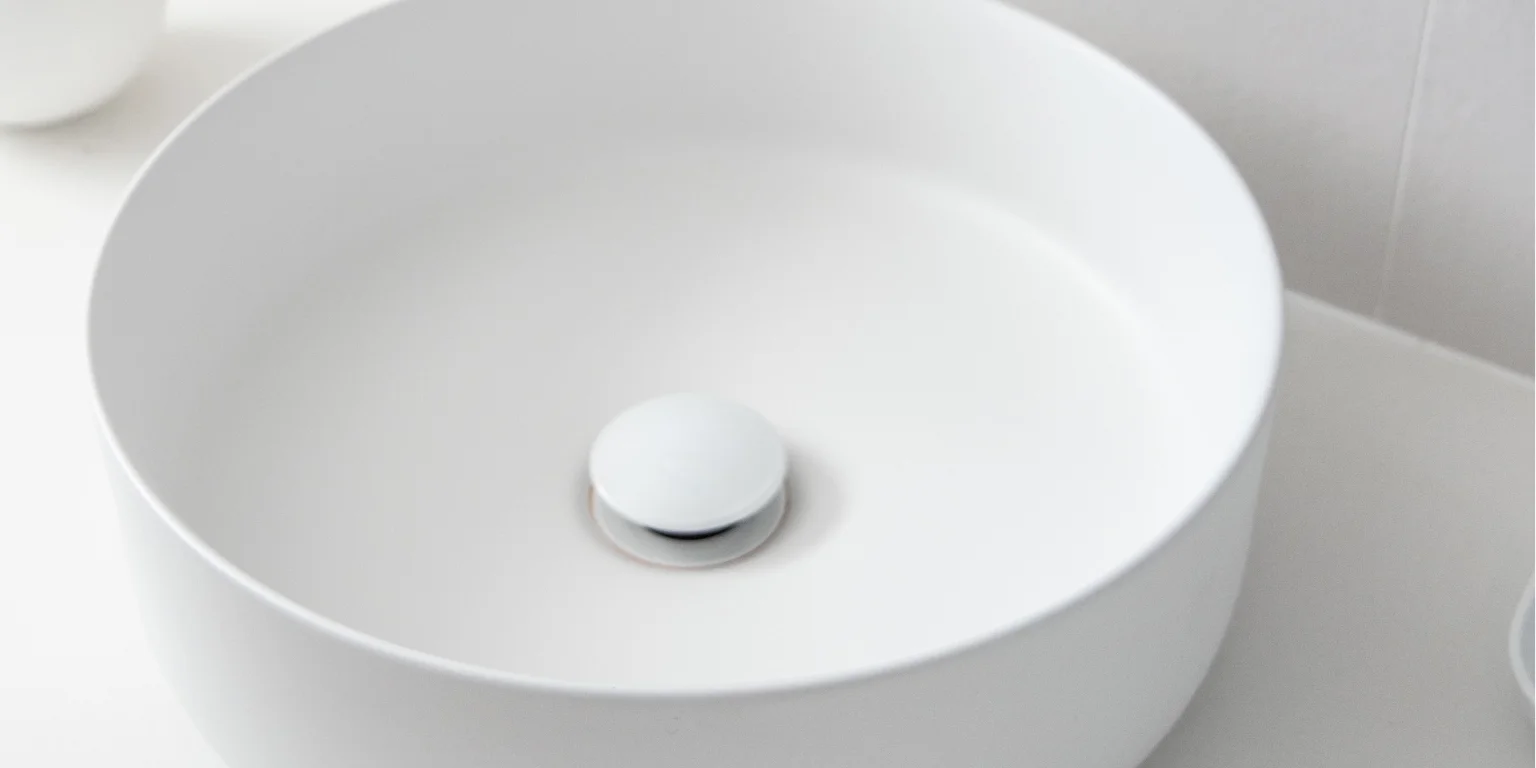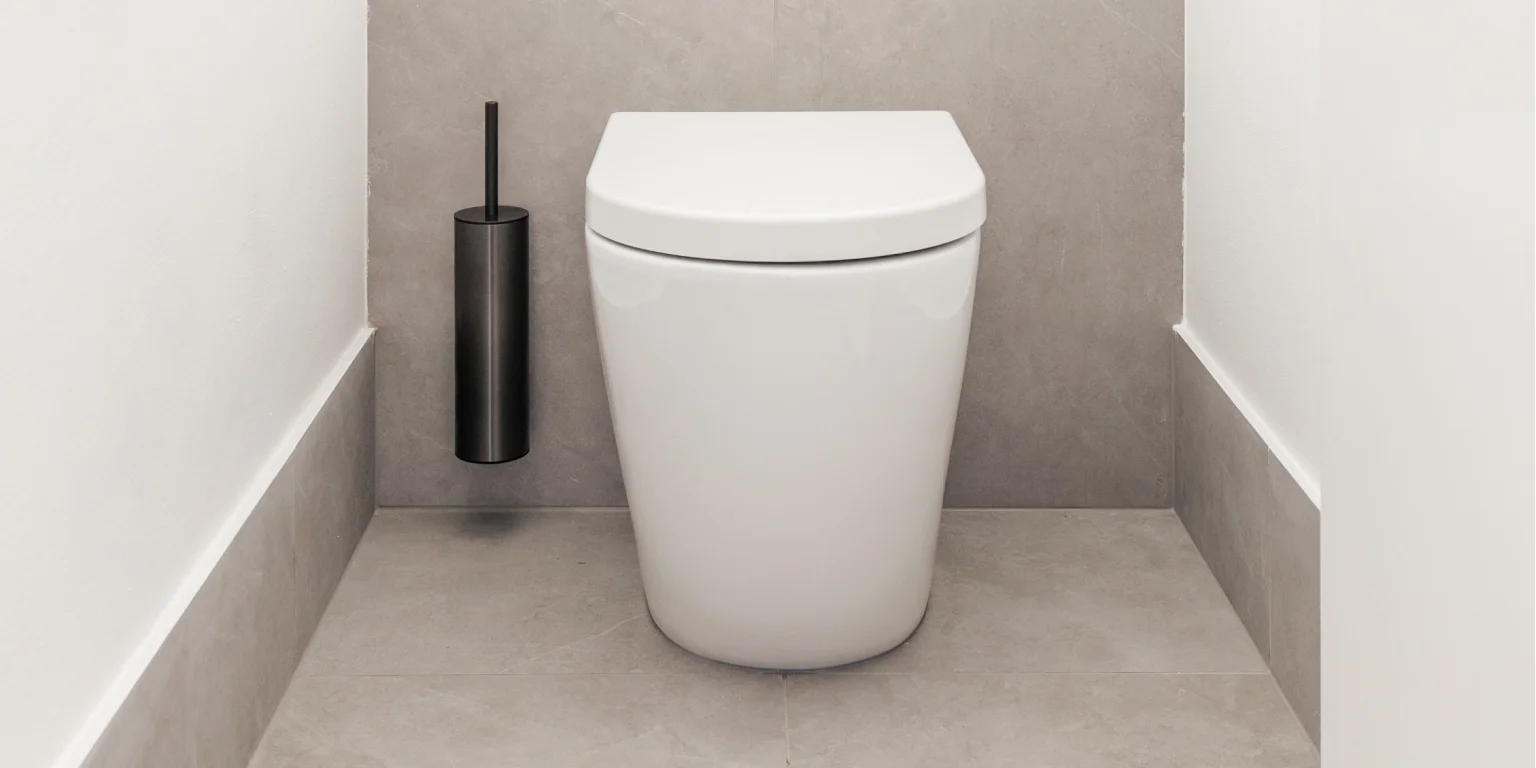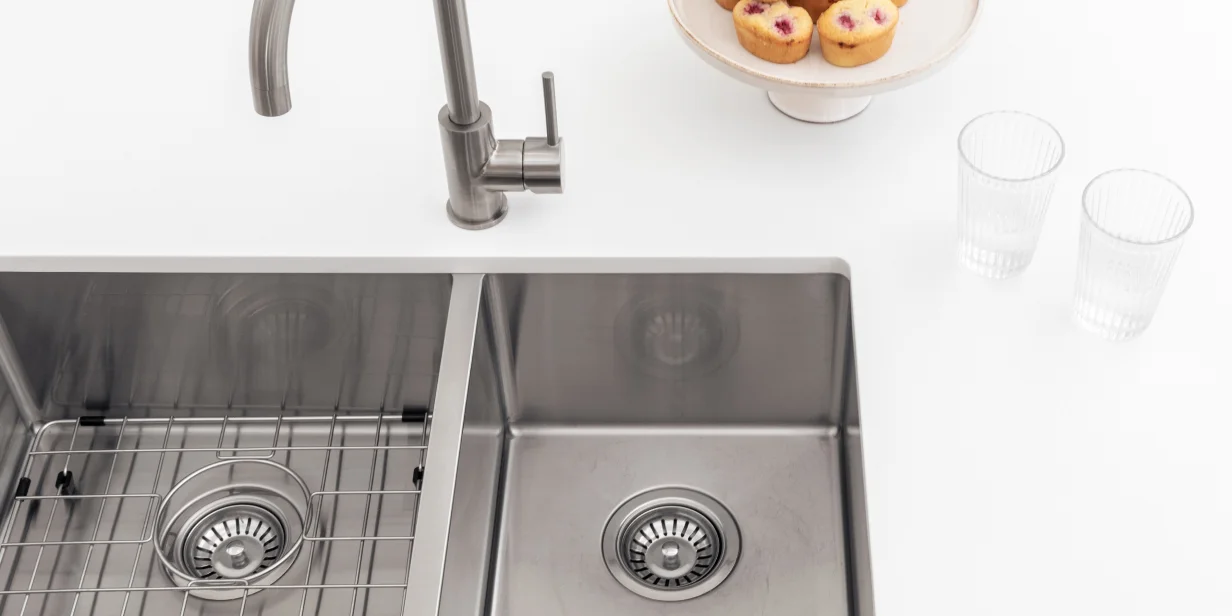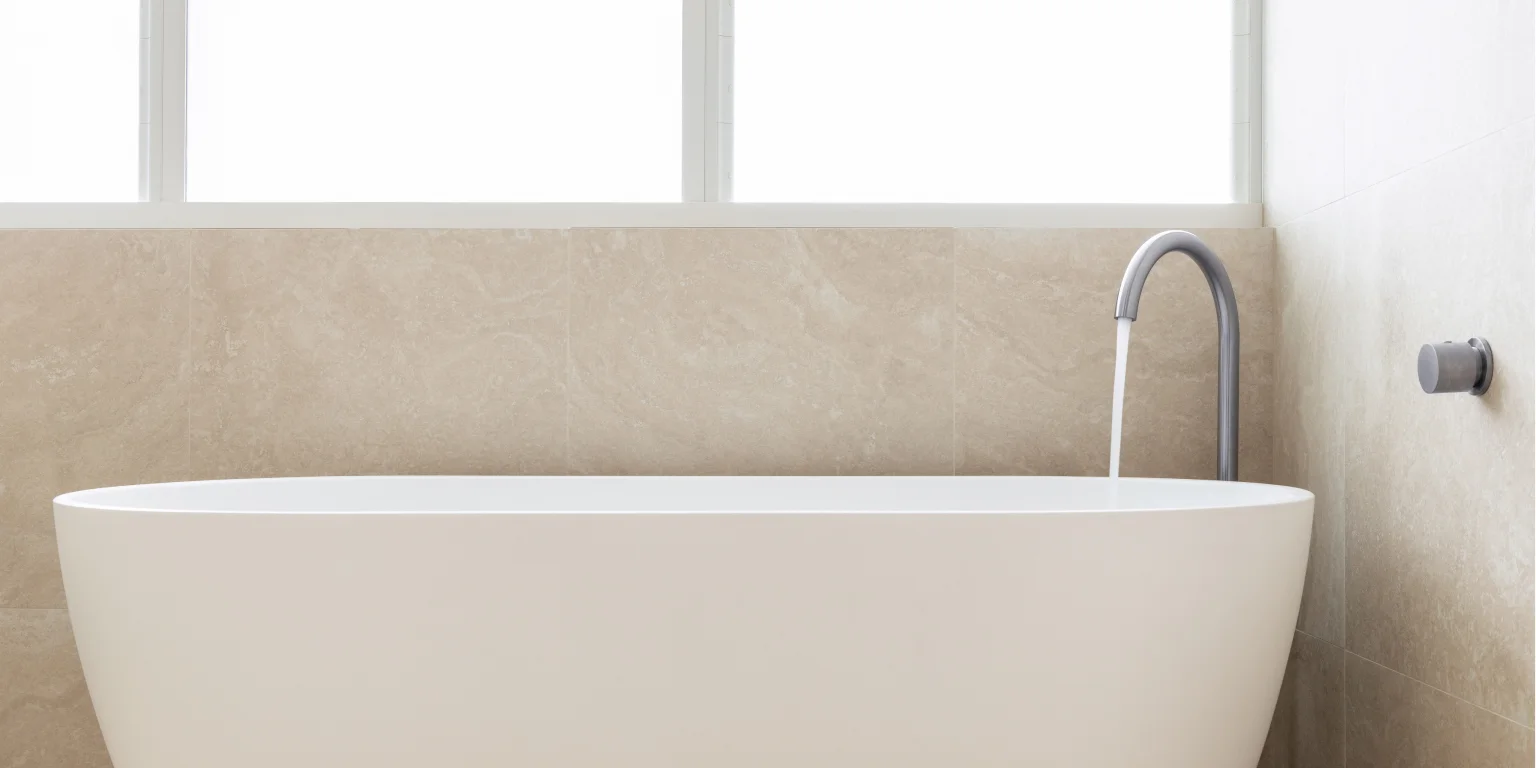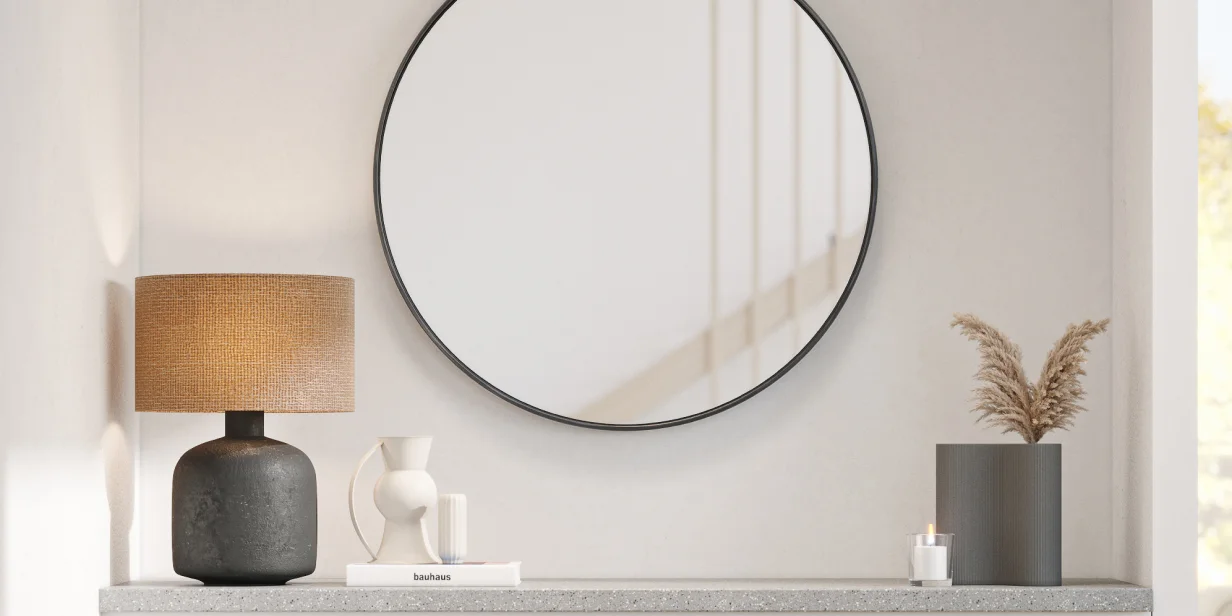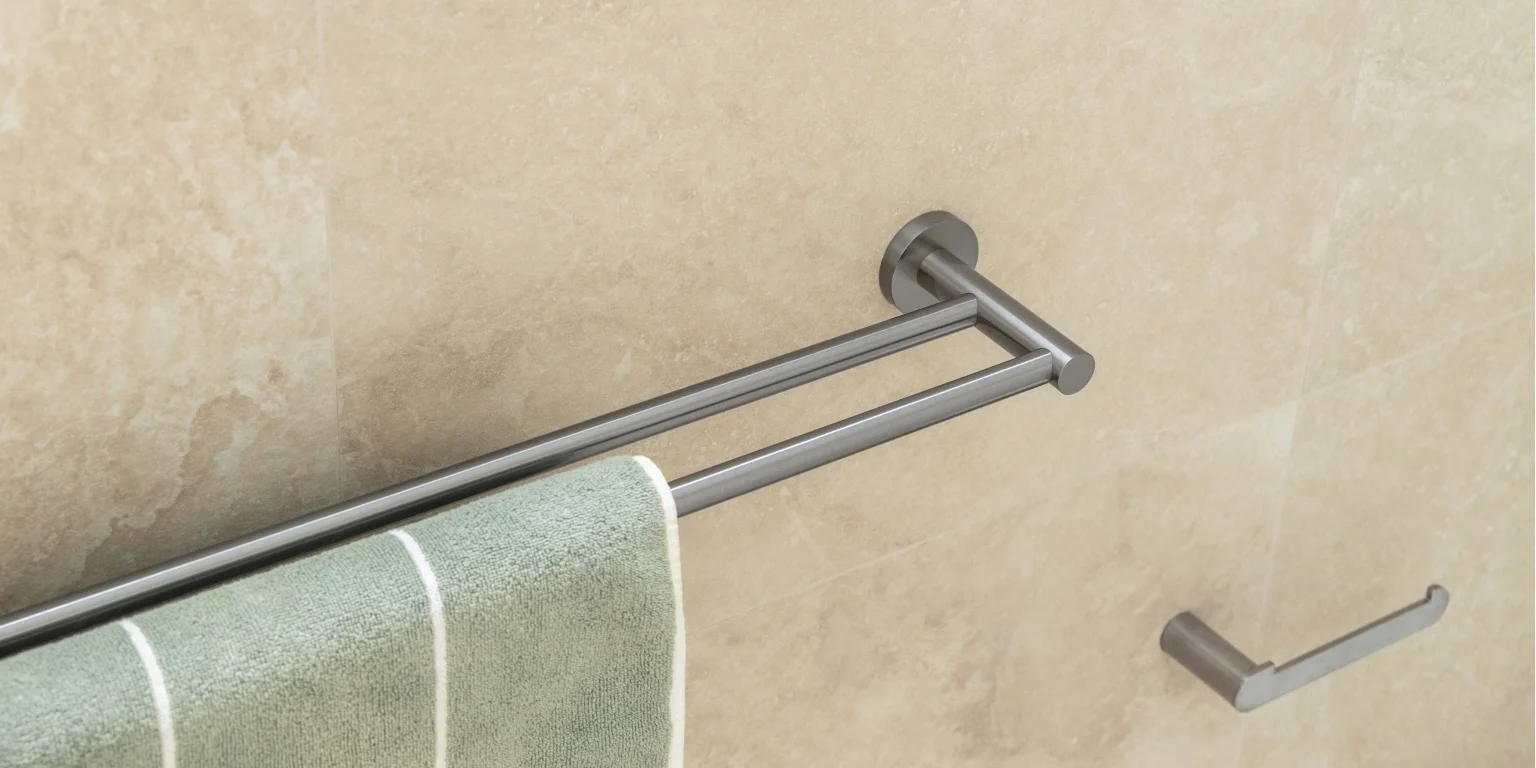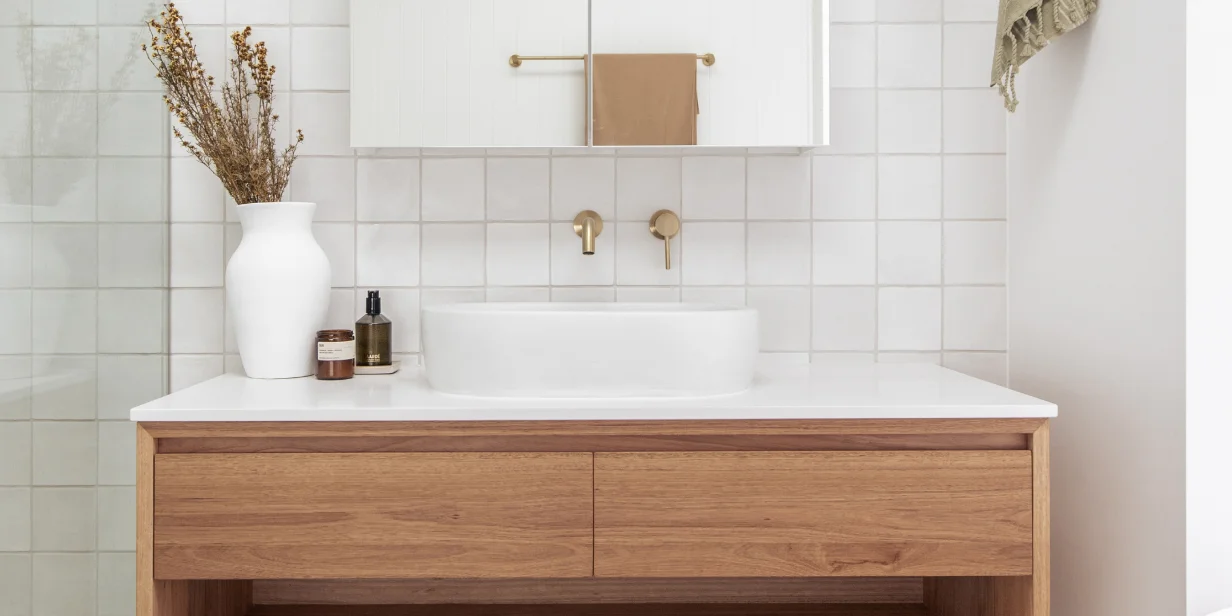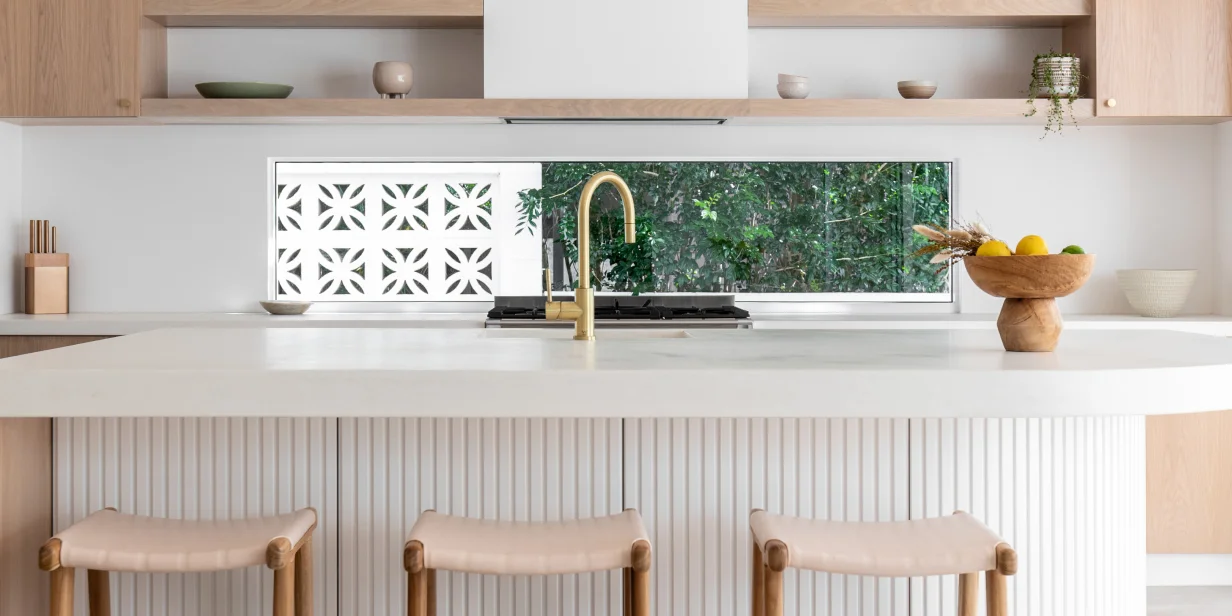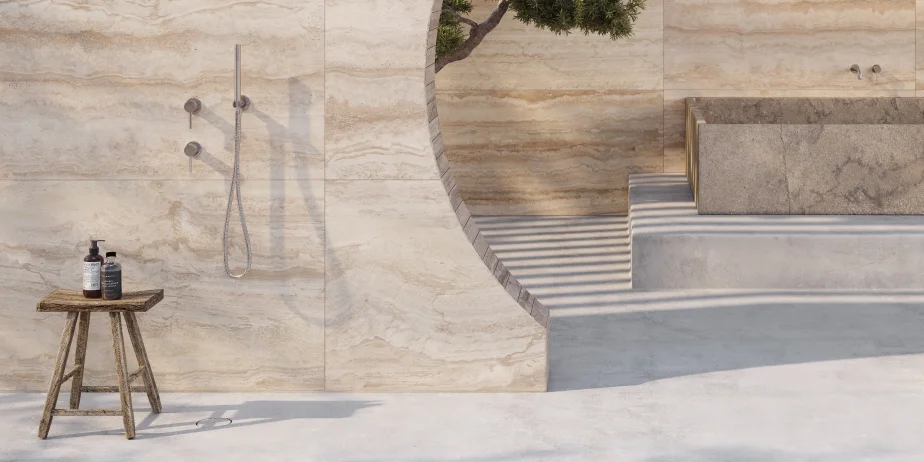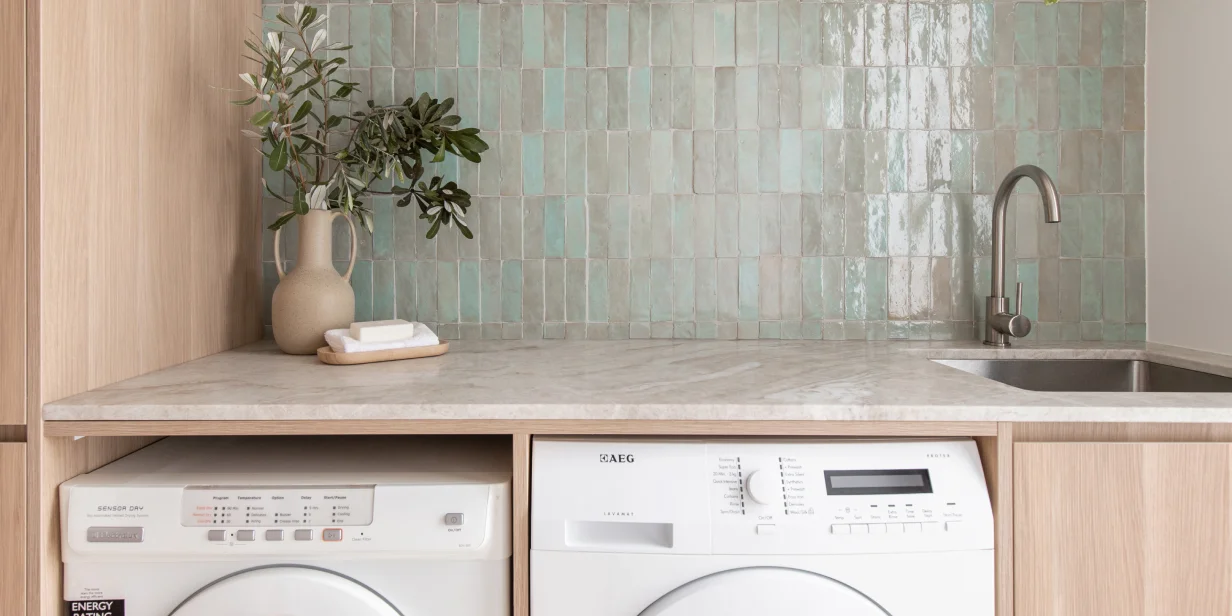10 OF THE BEST PLANTS FOR BATHROOMS + FREE DOWNLOADABLE CARE GUIDE
We retreat to our bathrooms to revitalise and refresh the senses, but our usage of this area can create a lovely environment for some plants to thrive in. Bathroom plants are quickly becoming a beloved decor piece, not only for their aesthetics but their ability to enhance a spa-like and relaxing atmosphere. It is also very easy to maintain a watering schedule in the bathroom, just by the sheer proximity to taps and showers.
Whether your space has too much sun or not enough, we have listed 10 plants that will survive in varying bathroom conditions. Keep reading for an in-depth scope of how to care for each of them.
If you would like an overview of the care guide, you can download our PDF for free here!
ZANZIBAR
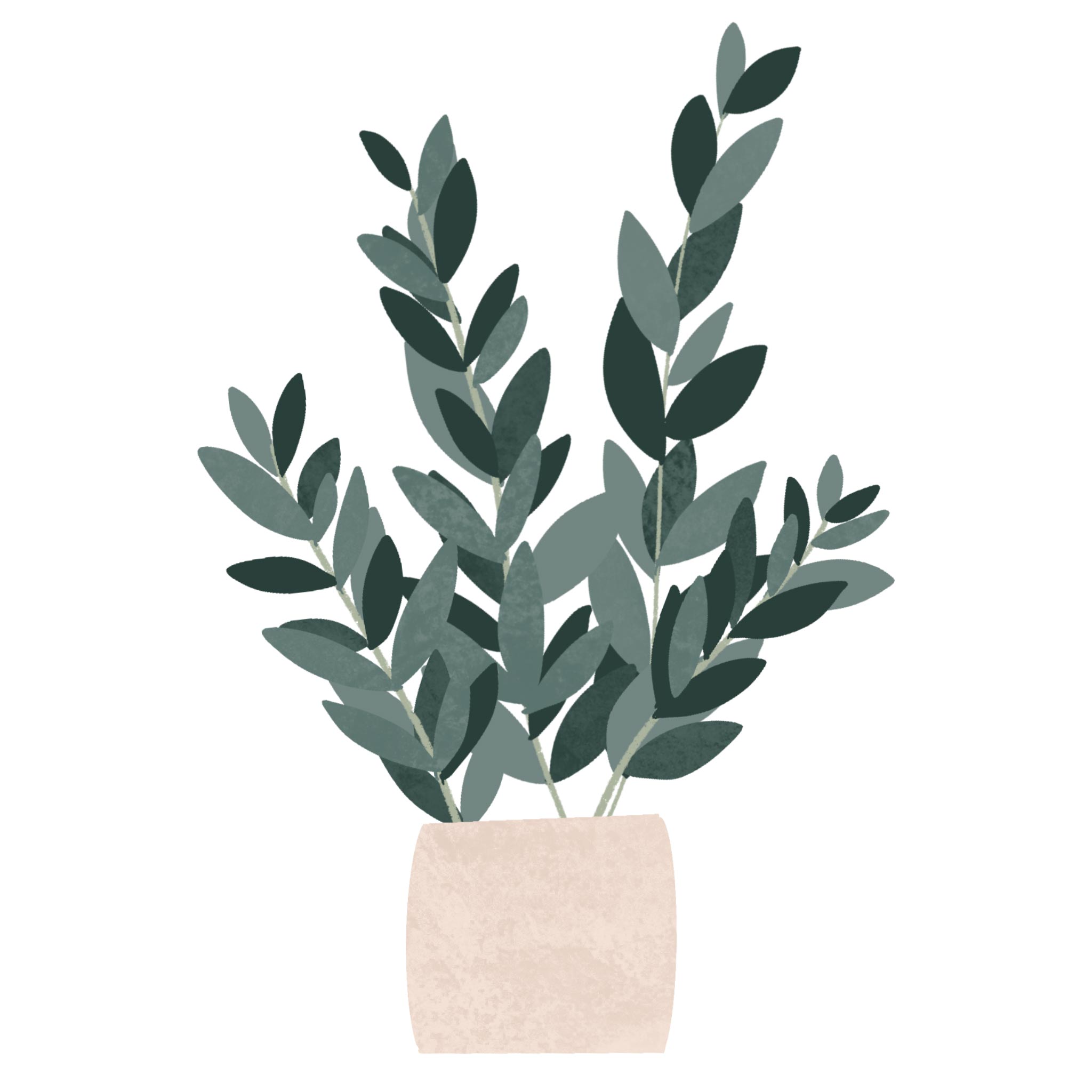
Speaking from personal experience, the Zanzibar or ZZ plant is an indestructible force of nature. A very special process powers its thick stems and elegant shiny leaves to make it a drought-tolerant plant. Zanzibar grows rhizomes that store water under the soil and allows it to have a constant source of hydration. If you are looking for a bathroom plant that you rarely have to think about, the Zanzibar will be your favourite guest.
Care Tips: You have to do close to nothing to keep this plant alive. It would be more of an ordeal to try and kill it. Zanzibar feels like one of those easy-going people that kind of have a preference for things but are happy with whatever. They can survive with very little light but thrive in bright areas. Keep it away from strong, direct sunlight as this can burn the leaves. It doesn’t require a regular watering schedule and can go for weeks, if not months, without water. Just water once you notice the soil is completely dry. As for conditions, average bathroom temperature should suffice, though it’s not too fond of cold temperatures so keep it away from chilly areas.
SNAKE PLANT

Also known as ‘mother-in-law’s tongue’, the snake plant is another hardy bathroom plant. It grows straight up with broad pointy leaves, usually featuring a green patterned centre and a yellow border on the edges. In NASA’s 1989 Clean Air Study, it found that the snake plant is one of only a few plants that convert CO2 to oxygen at night time. So if you’re an evening bather, it may help you feel more relaxed and sleepy. Snake plants can either be potted or propagated in water.
Care Tips: Again like the Zanzibar, it is tough to take down this plant. Snake plants prefer warm locales with small doses of direct sun but will also survive in dim conditions. They aren’t the biggest fan of the cold. As for water, these plants don’t need much. Just whenever the soil is dry if planted in a pot or when water is low if in a vase. In winter, you can keep the watering schedule monthly. Ensure that you don’t overwater snake plants as they will rot.
ALOE VERA
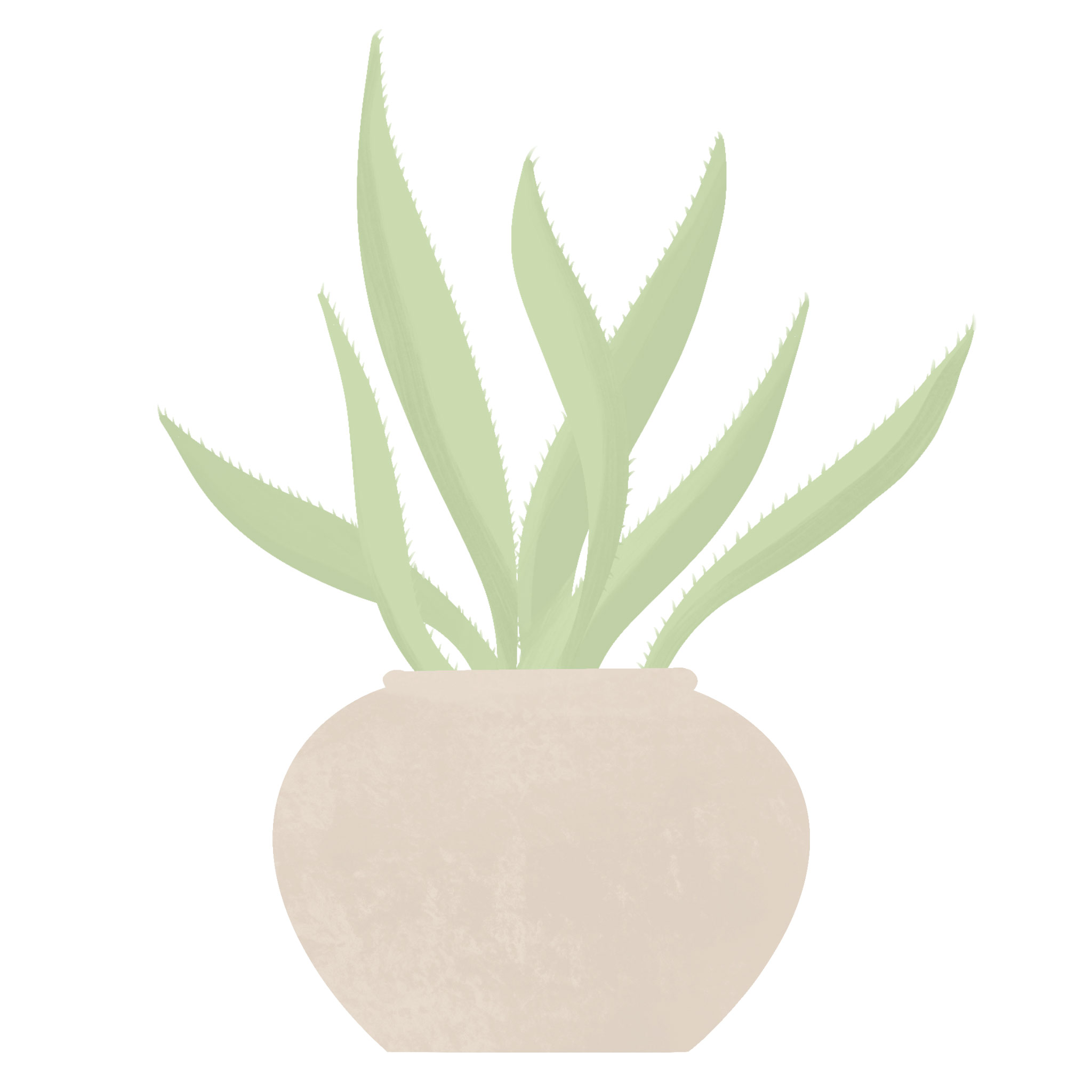
This popular succulent is widely accepted as the topical antidote for sunburn. Aloe vera is characterised by its fleshy leaves that grow out from the base, with prickly edges and a malleable centre. If you want to use the gel from aloe vera:
- Pick a handful of leaves from the outer ring of the plant.
- Cut them close to the base as this is the most nutrient-dense area.
- Cut it in half lengthwise, then squeeze the gel out into a bowl.
Having aloe vera as a bathroom plant is a great idea, especially in summer, as it provides a convenient reprieve for sunburnt skin or insect bites.
Care Tips: Just like you and your skin, aloe vera likes bright sunny spaces but not direct sunshine. Water fairly regularly, but when the soil is dry. If you have been an attentive carer, you should not have to water it in winter as aloe vera tends to go dormant. This one can withstand cooler temperatures, but not frost.
CAST-IRON PLANT
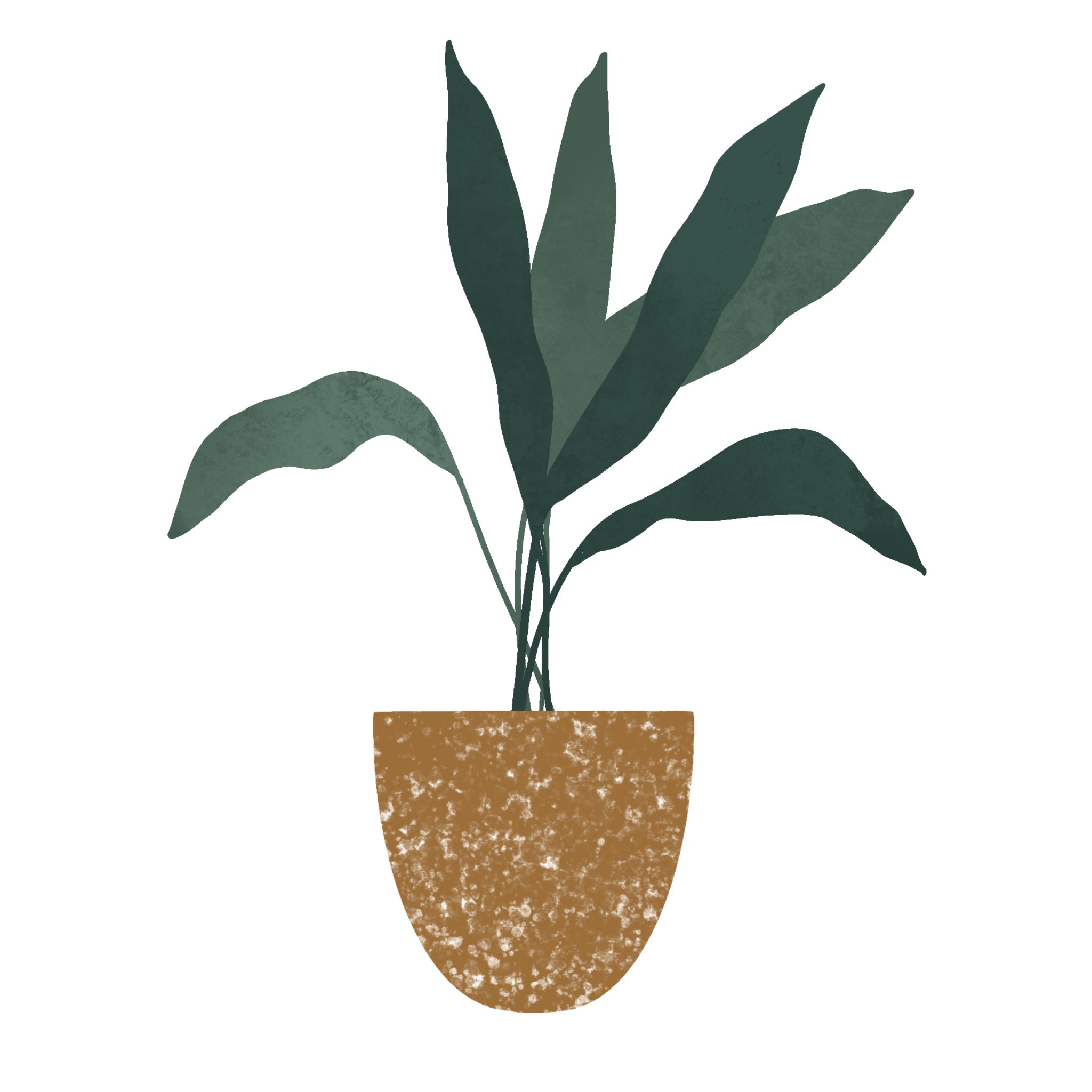
Another one for the hard-to-kill list is the cast-iron plant. The large, almond-shaped leaves arch downwards and are a stunning deep green. If you’re looking for something that grows a bit on the larger side, this is the best bathroom plant for you. The cast-iron can withstand even the most negligent plant parents and continues to live in situations where most other plants wouldn’t.
Care Tips: Do you want plants in your bathroom, but you worry that natural light isn’t aplenty? The cast-iron doesn’t mind. In fact, it can grow in complete shade. Keep it away from direct sun, preferably in a north-facing bathroom. This plant isn’t too fastidious when it comes to watering, it just asks that you don’t overdo it, or it may get root-rot. Let it dry out a little between waters. Bugs don’t seem to want this plant, so you shouldn’t have too many problems with those critters. The cast-iron plant doesn’t like temperatures below 15˚C, and although not necessary, it favours a bit of humidity, which is why we think it would be an excellent plant for the bathroom.
BOSTON FERN
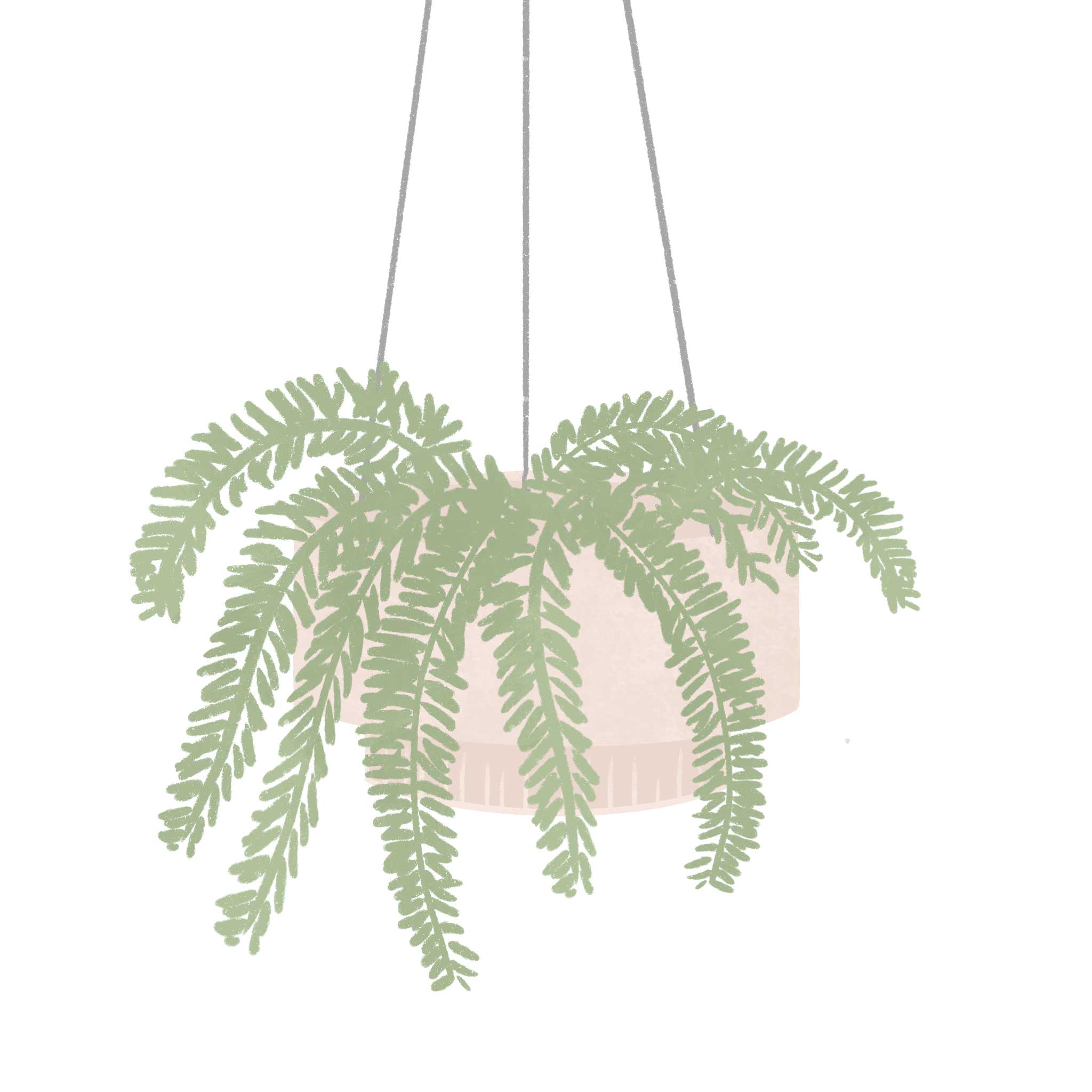
The Boston fern is the quintessential vision of ferns that we all know and love. Splaying out with its lush fronds and evergreen colour, it can grow around 30-90cm high. This tropical variety has been a go-to for indoor plant enthusiasts, as they’re relatively easy to grow compared to other fern species. It can be a beautiful hanging plant for the bathroom, but its animated form will look impactful wherever it’s placed.
Care Tips: Boston ferns enjoy conditions that mimic the tropical forest floor, so high humidity, filtered sun, and a cool room temperature, which makes it an excellent match for the bathroom. Keep it near a steamy shower or mist daily. Ensure that your bathroom is bright, but don’t leave it in direct sunlight. Signs of not enough humidity will show in yellow and brown leaf tips. Keep soil moist but not overwatered.
PEACE LILY
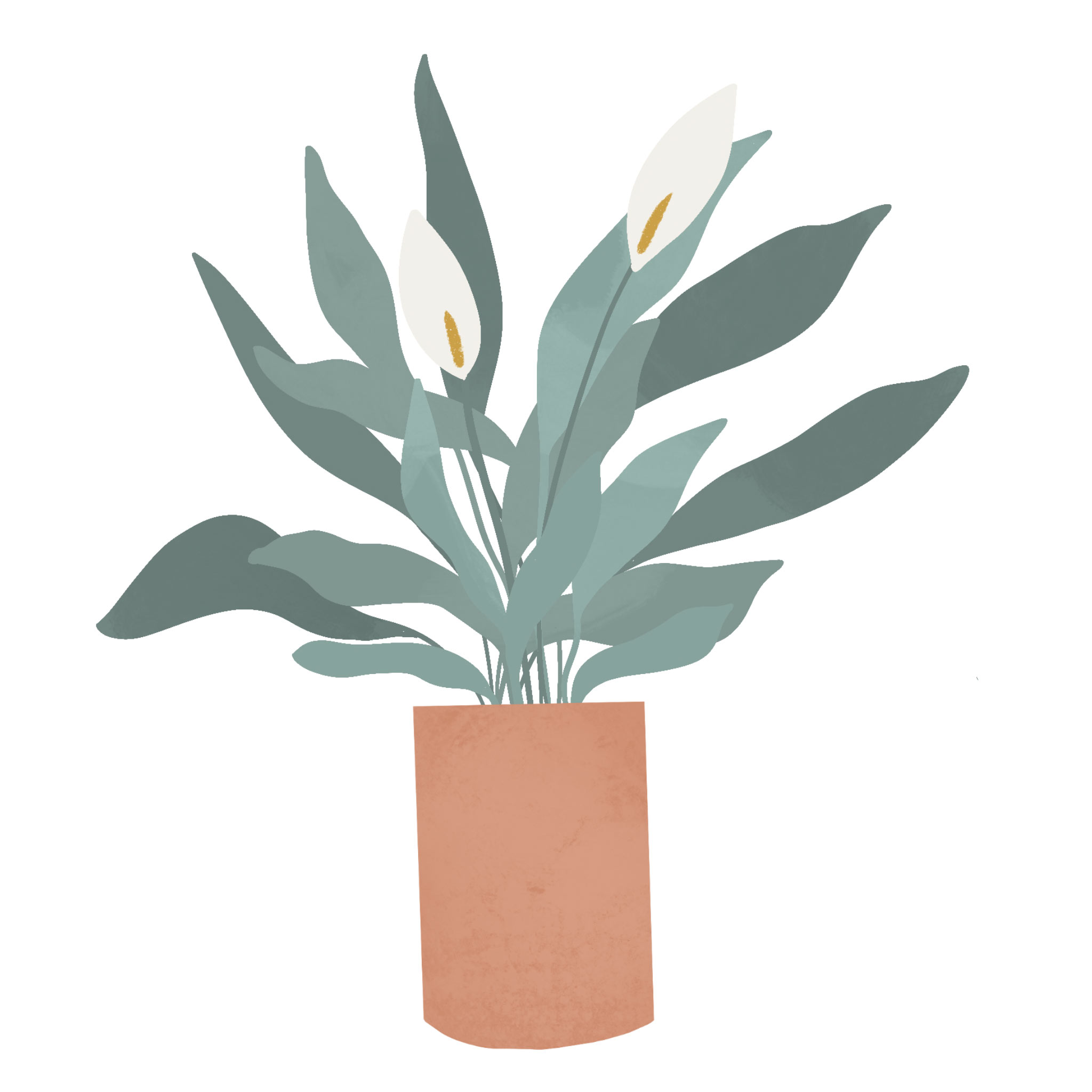
Attractive and elegant, the peace lily remains one of the standout houseplants for a reason. Beautiful white flowers can emerge gracefully above the other leaves and stay for a couple of months. It originates from the rainforests of South America and enjoys a tropical climate, so it should survive well as a bathroom plant.
Care Tips: Peace lilies love a warm bathroom with filtered sun. Don’t put it in direct sunshine as it isn’t used to that in the forest. If the leaves start to pale in colour and curl, this indicates too much sun. It loves humidity, so in summer, keep it near your shower and mist regularly. In winter, keep the soil moist but do not overwater. As a true tropical lover, it doesn’t like the cold whatsoever, so keep it warm to ensure it doesn’t deteriorate.
SPIDER PLANT

After another hanging plant for the bathroom? The spider plant could meet your needs. Just like a real spider, it dramatically cascades down with its long thin leaves and plantlets at the end. They are another terrific plant for busy people as they will endeavour to strive and survive.
Care Tips: Spider plants thoroughly enjoy bright, indirect sunshine. Direct light can burn the leaves. Keep them not too dry or not too wet, just a nice even moisture. In summer, you can keep them extra hydrated for growth but ensure they have adequate draining. Average room temperature and humidity work best for them, and they don’t like being below 13˚C.
DRAGON TREE

Dragon tree plants can bring an edge of uniqueness to your space. It features brown trunks with lively strappy leaves that shoot upwards and survives well without too much watering. It’s an ideal bathroom plant as the dragon tree enjoys the conditions and offers a vibrant ambience.
Care Tips: Dragon tree plants prefer underwatering to overwatering, so when the first few centimetres of soil are dry, that’s when you can water. Brown tips will tell you that you are watering your dragon tree plant too much. If the leaves are yellow, that means they want more water. Dragon trees particularly love warm climates and will do best in indirect sun. It does like a little bit of humidity, so in drier months, maintain a light mist.
GOLDEN POTHOS

If you’re still sceptical about the immortality of some of the plants mentioned, the golden pothos will make you a believer. Lauded for its ability to withstand almost anything you throw at them, it is a fantastic potted or hanging plant for the bathroom. It will certainly validate any shred of green that exists in your thumb.
Care Tips: It can tolerate low light, but golden pothos much prefers bright, indirect light. Check when the soil is dry for when to water, usually every week or second week. In warmer months, it may need extra waterings. As for humidity, it has no qualms and will love your home.
*Golden pothos and the very similar philodendron are toxic to pets when ingested. Take extra care if growing.*
CALATHEA FREDDIE
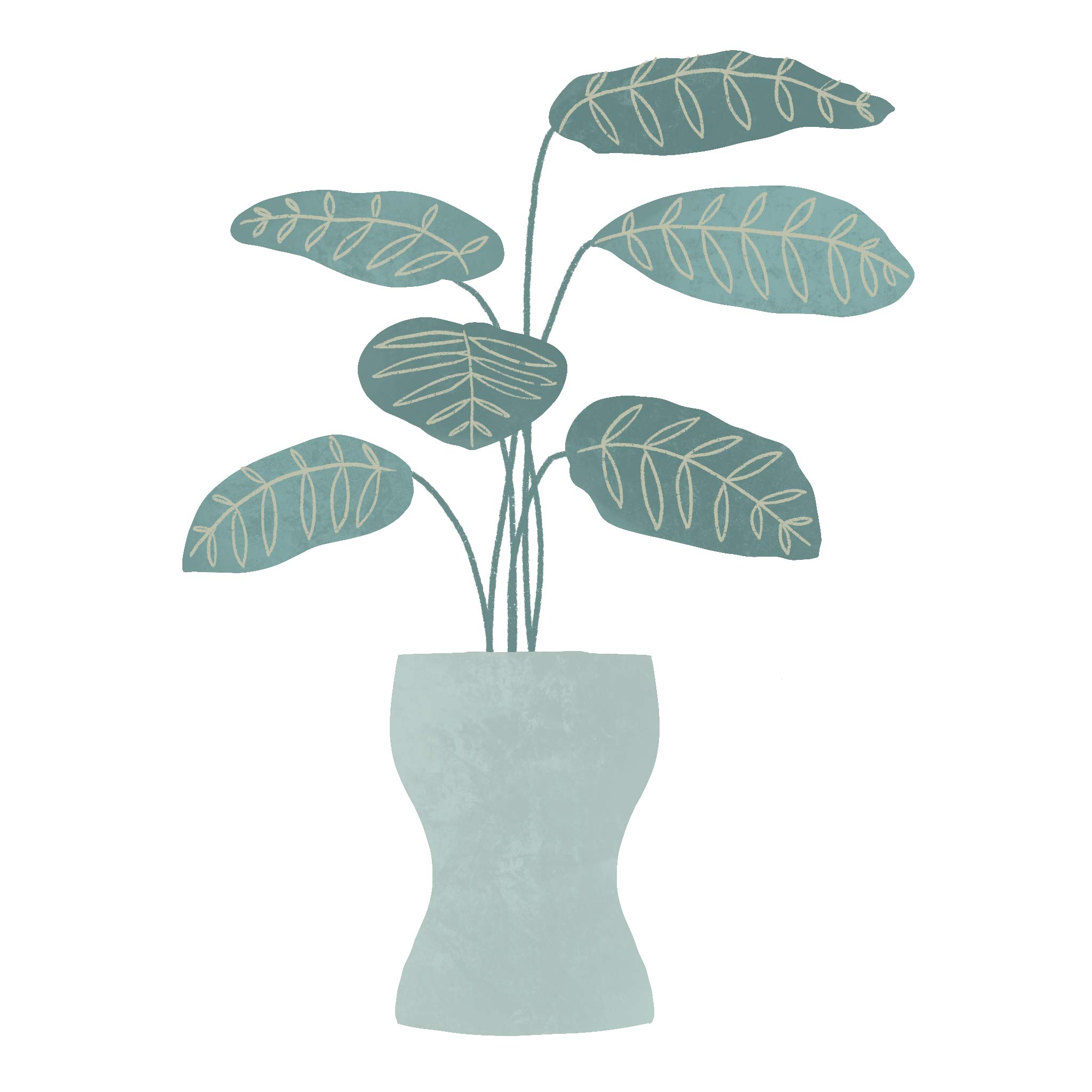
Ending on a beautiful and interesting note, we have the Calathea Freddie. This species is part of the ‘prayer plants’, which means their leaves slightly fold up at night and are released when it’s daytime. They are characterised by their bold light and dark green patterned leaves, making them a striking bathroom plant to watch in your space.
Care Tips: These plants aren’t the easiest for beginners, but we believe the bathroom will have the best conditions for it out of any place in the home. Calathea Freddie is a tropical plant and will suit a bustling and busy bathroom that’s full of humidity. If your bathroom runs on the drier side, mist frequently. Medium indirect light is its favourite, and it should avoid direct sun, so there’s no scorching. Water when the top quarter of soil is dry, and ensure it drains out the bottom. Empty any excess water to avoid overwatering. Keep it away from any cold temperatures and winds.
